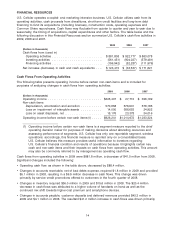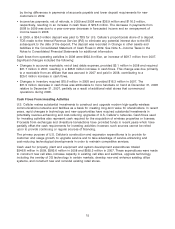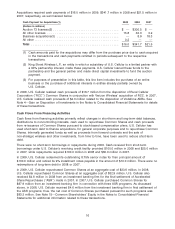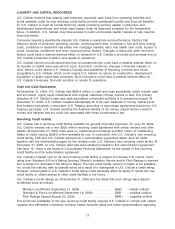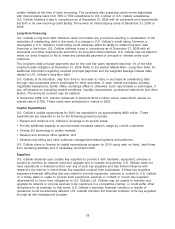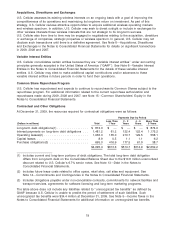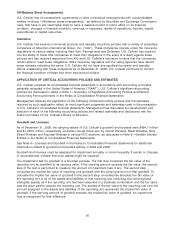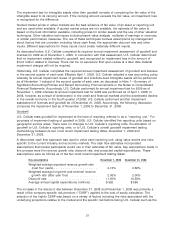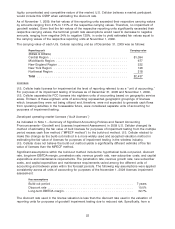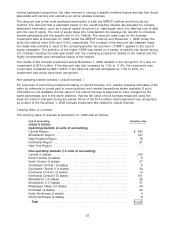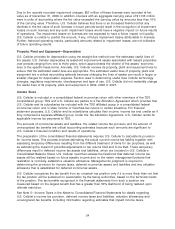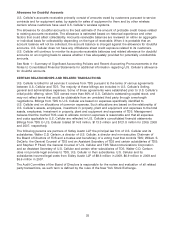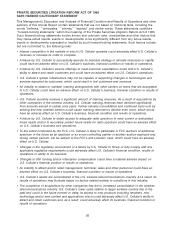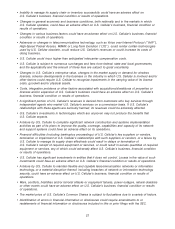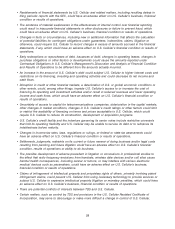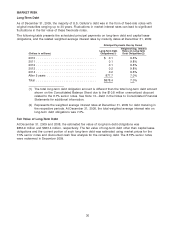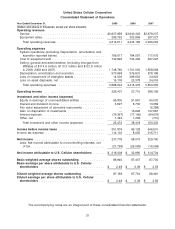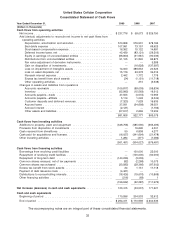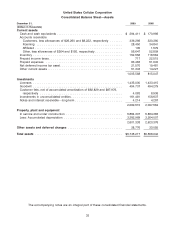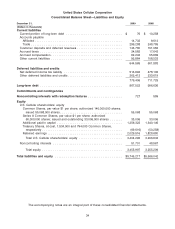US Cellular 2009 Annual Report Download - page 32
Download and view the complete annual report
Please find page 32 of the 2009 US Cellular annual report below. You can navigate through the pages in the report by either clicking on the pages listed below, or by using the keyword search tool below to find specific information within the annual report.Due to the recently recorded impairment charges, $57 million of these licenses were recorded at fair
value as of December 31, 2009. In addition, licenses with an aggregate carrying value of $1,105 million
were in units of accounting where the fair value exceeded the carrying value by amounts less than 10%
of the carrying value. Therefore, U.S. Cellular believes that there is an increased likelihood that any
declines in the fair value of such licenses in future periods would result in the recognition of impairment
losses on such licenses and any such impairment losses would have a negative impact on future results
of operations. The impairment losses on licenses are not expected to have a future impact on liquidity.
U.S. Cellular is unable to predict the amount, if any, of future impairment losses attributable to licenses.
Further, historical operating results, particularly amounts related to impairment losses, are not indicative
of future operating results.
Property, Plant and Equipment—Depreciation
U.S. Cellular provides for depreciation using the straight-line method over the estimated useful lives of
the assets. U.S. Cellular depreciates its leasehold improvement assets associated with leased properties
over periods ranging from one to thirty years, which approximates the shorter of the assets’ economic
lives or the specific lease terms. Annually, U.S. Cellular reviews its property, plant and equipment lives to
ensure that the estimated useful lives are appropriate. The estimated useful lives of property, plant and
equipment are a critical accounting estimate because changing the lives of assets can result in larger or
smaller charges for depreciation expense. Factors used in determining useful lives include technology
changes, regulatory requirements, obsolescence and type of use. U.S. Cellular did not materially change
the useful lives of its property, plant and equipment in 2009, 2008 or 2007.
Income Taxes
U.S. Cellular is included in a consolidated federal income tax return with other members of the TDS
consolidated group. TDS and U.S. Cellular are parties to a Tax Allocation Agreement which provides that
U.S. Cellular and its subsidiaries be included with the TDS affiliated group in a consolidated federal
income tax return and in state income or franchise tax returns in certain situations. For financial
statement purposes, U.S. Cellular and its subsidiaries calculate their income, income tax and credits as if
they comprised a separate affiliated group. Under the Tax Allocation Agreement, U.S. Cellular remits its
applicable income tax payments to TDS.
The amounts of income tax assets and liabilities, the related income tax provision and the amount of
unrecognized tax benefits are critical accounting estimates because such amounts are significant to
U.S. Cellular’s financial condition and results of operations.
The preparation of the consolidated financial statements requires U.S. Cellular to calculate its provision
for income taxes. This process involves estimating the actual current income tax liability together with
assessing temporary differences resulting from the different treatment of items for tax purposes, as well
as estimating the impact of potential adjustments to tax returns filed and to be filed. These temporary
differences result in deferred income tax assets and liabilities, which are included in U.S. Cellular’s
Consolidated Balance Sheet. U.S. Cellular must then assess the likelihood that deferred income tax
assets will be realized based on future taxable income and, to the extent management believes that
realization is not likely, establish a valuation allowance. Management’s judgment is required in
determining the provision for income taxes, deferred income tax assets and liabilities and any valuation
allowance that is established for deferred income tax assets.
U.S. Cellular recognizes the tax benefit from an uncertain tax position only if it is more likely than not that
the tax position will be sustained on examination by the taxing authorities, based on the technical merits
of the position. The tax benefits recognized in the financial statements from such a position are
measured based on the largest benefit that has a greater than 50% likelihood of being realized upon
ultimate resolution.
See Note 5—Income Taxes in the Notes to Consolidated Financial Statements for details regarding
U.S. Cellular’s income tax provision, deferred income taxes and liabilities, valuation allowances and
unrecognized tax benefits, including information regarding estimates that impact income taxes.
24


